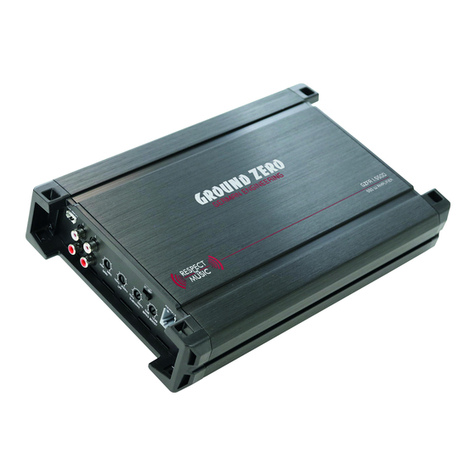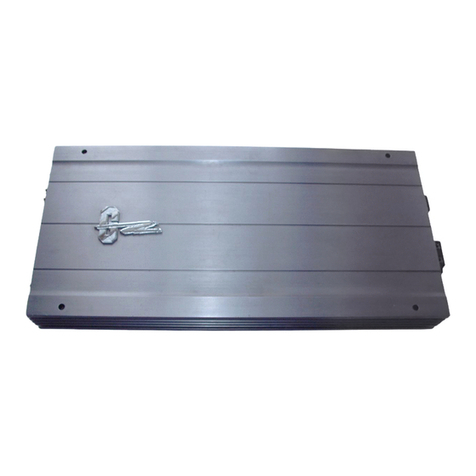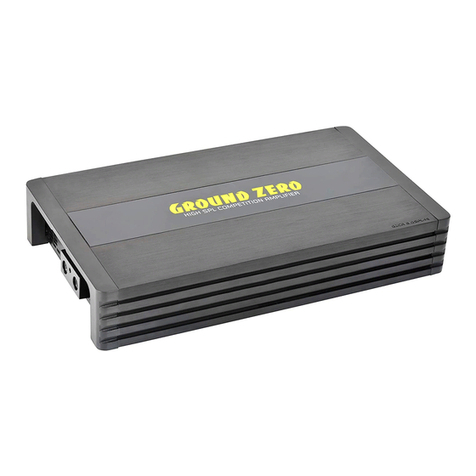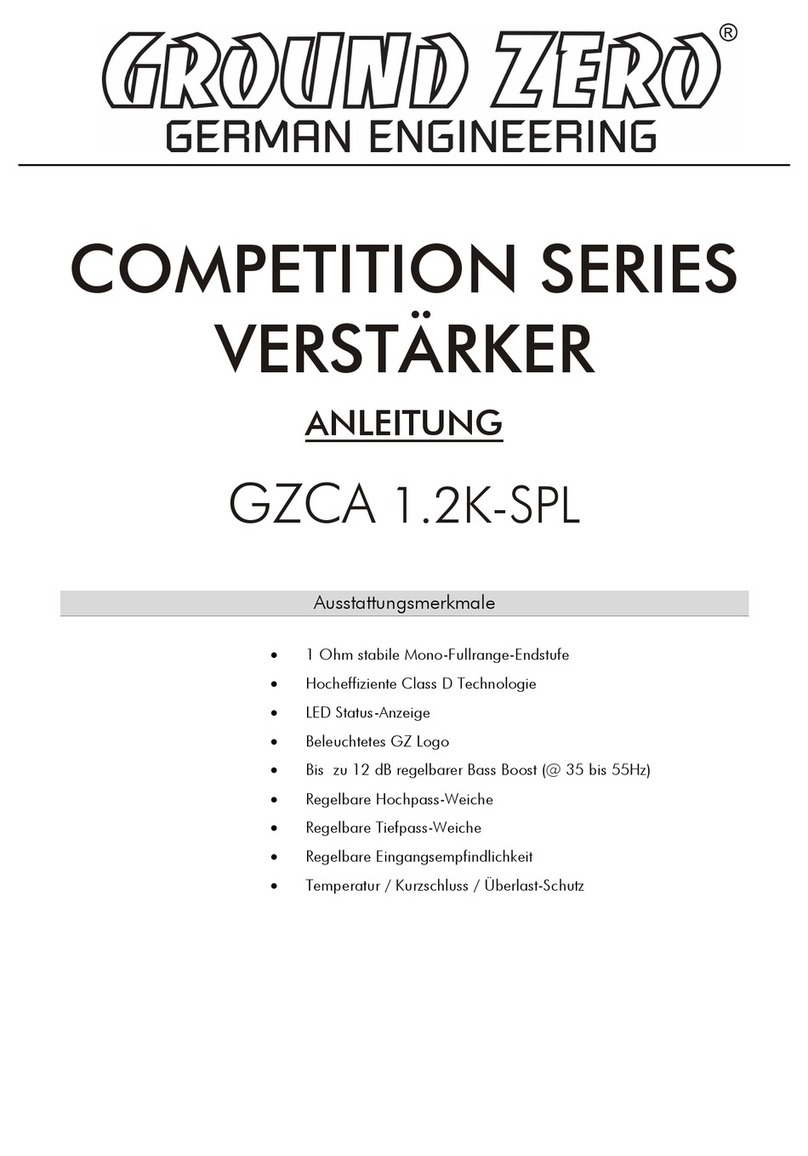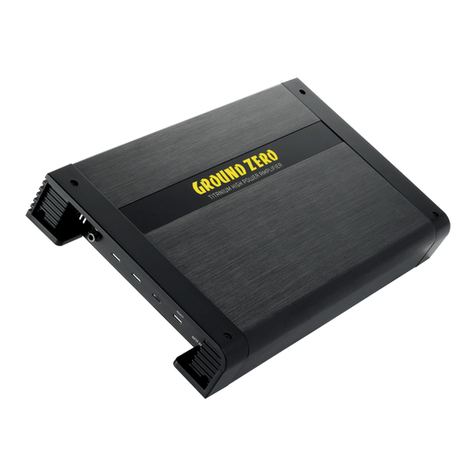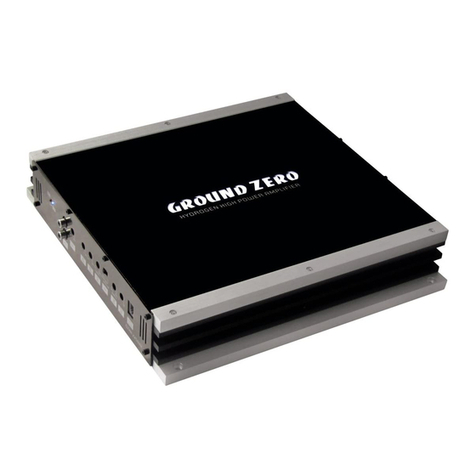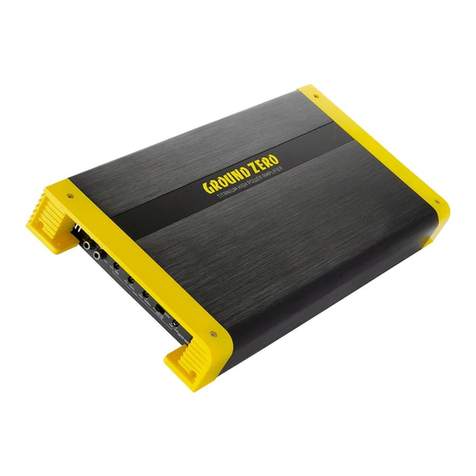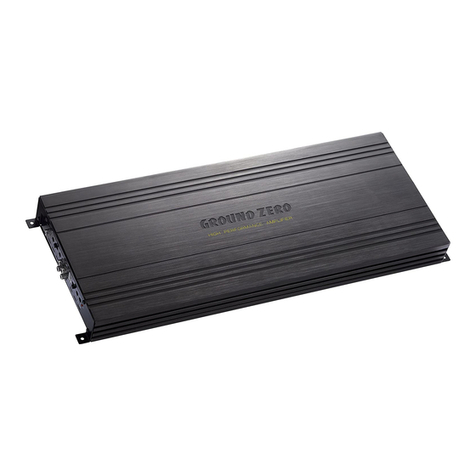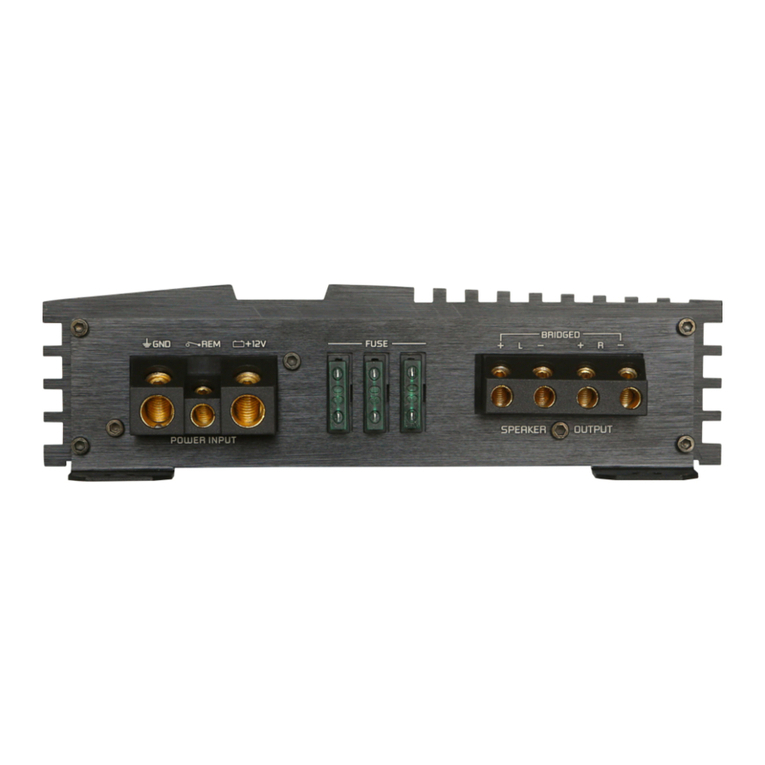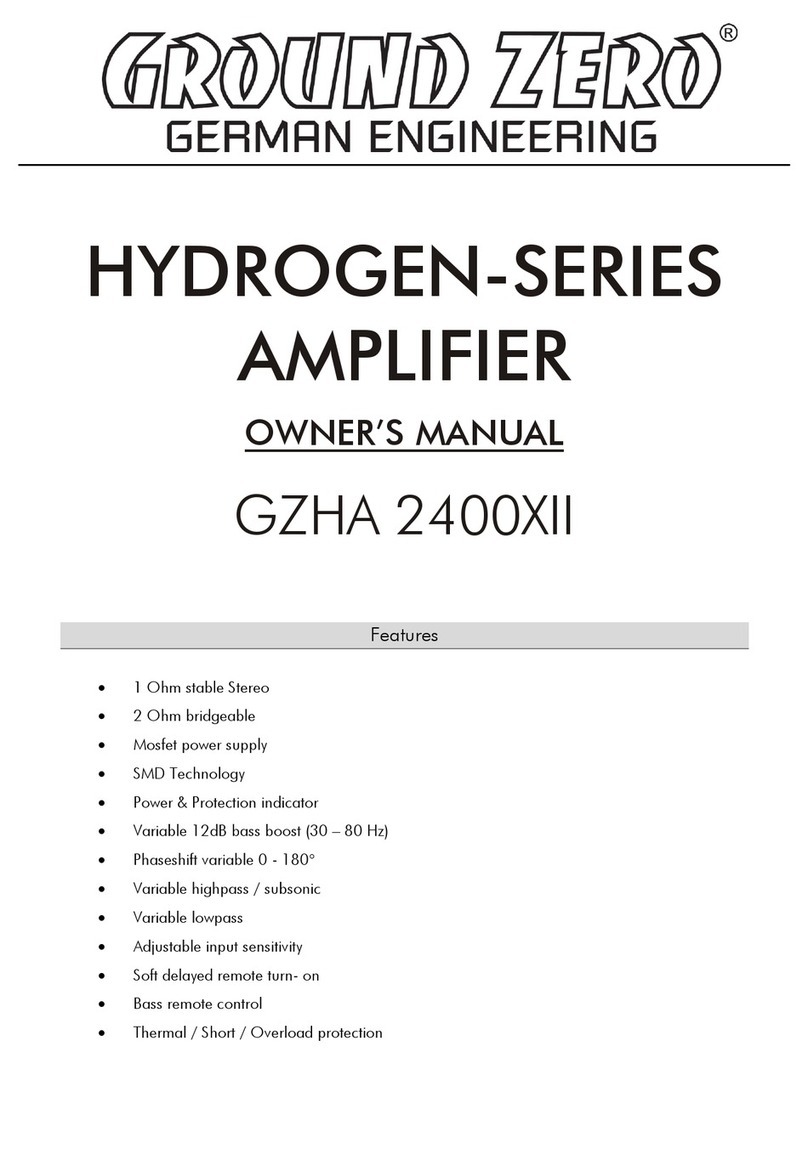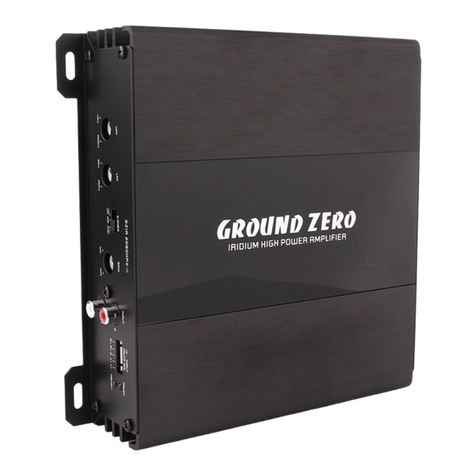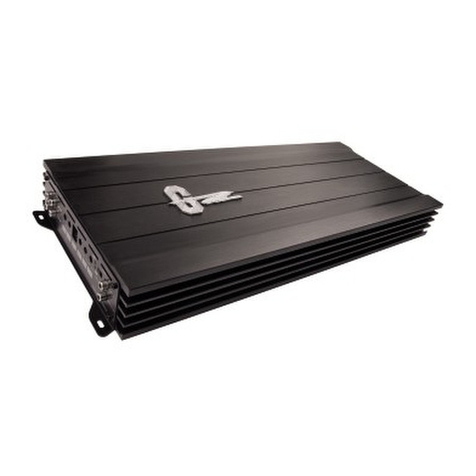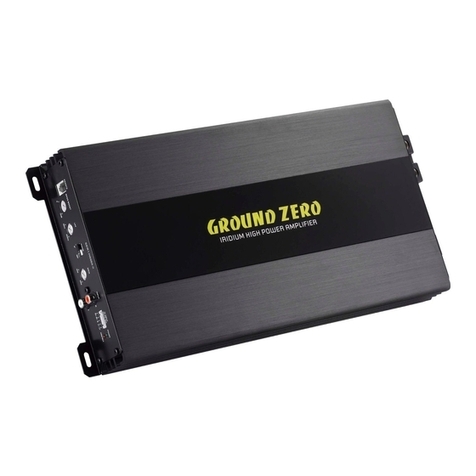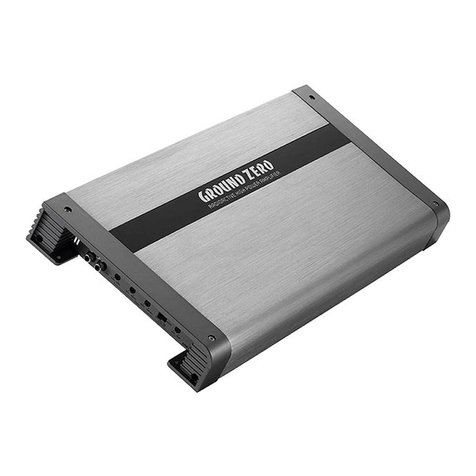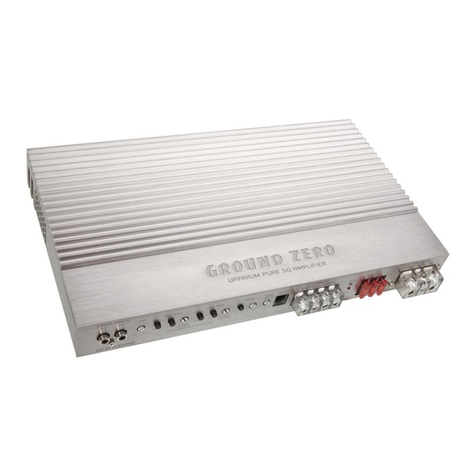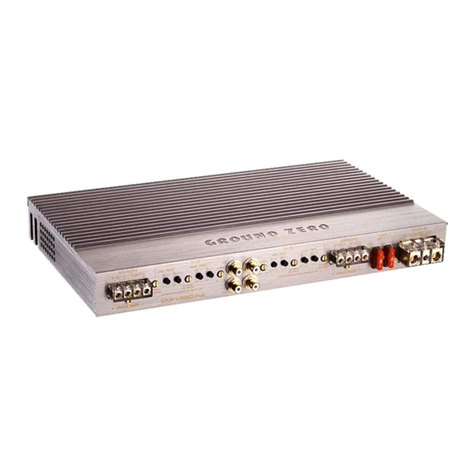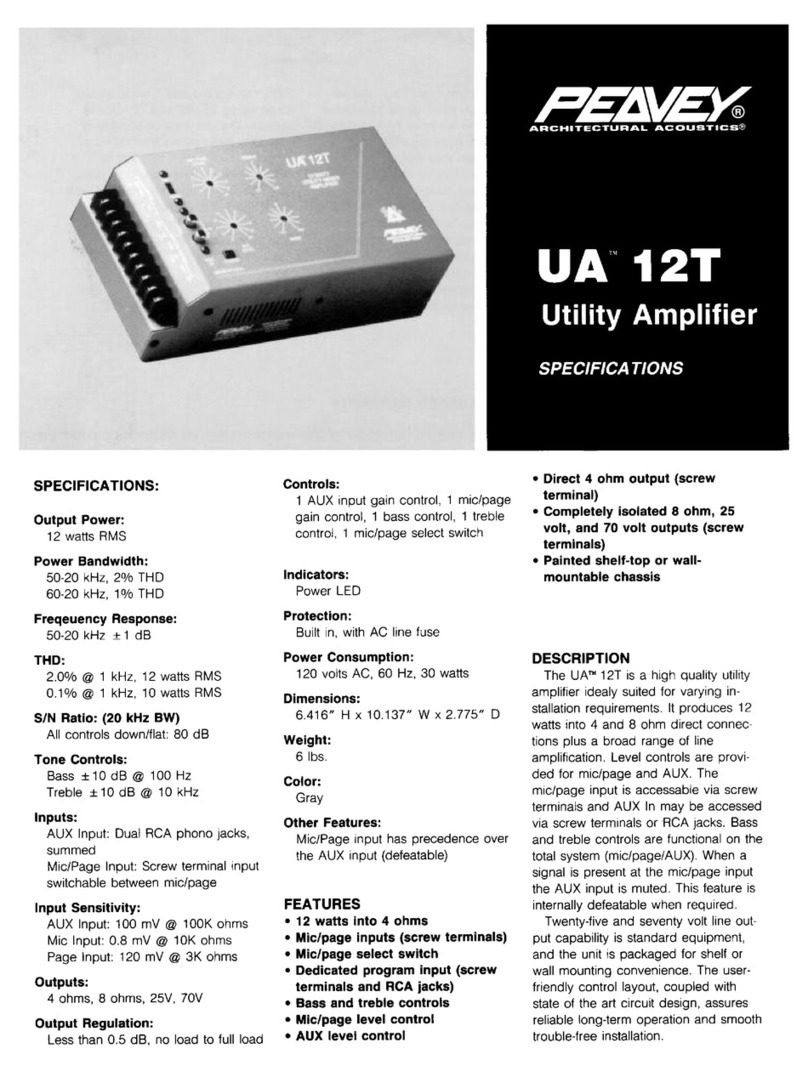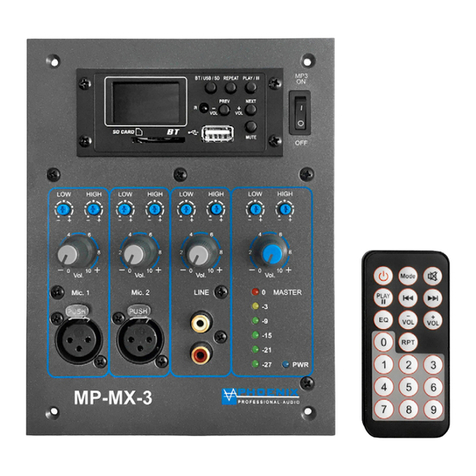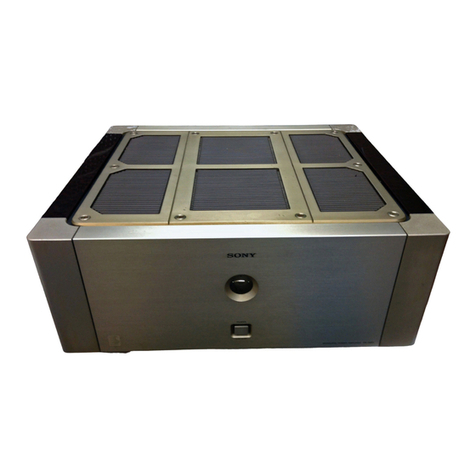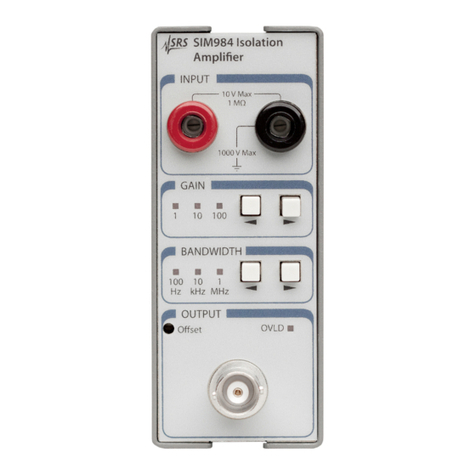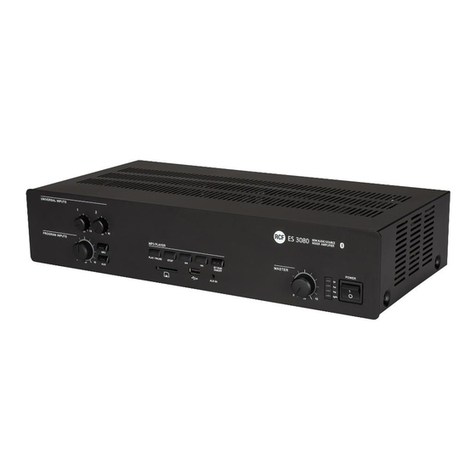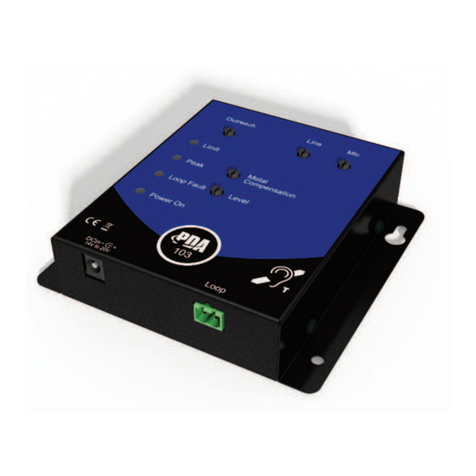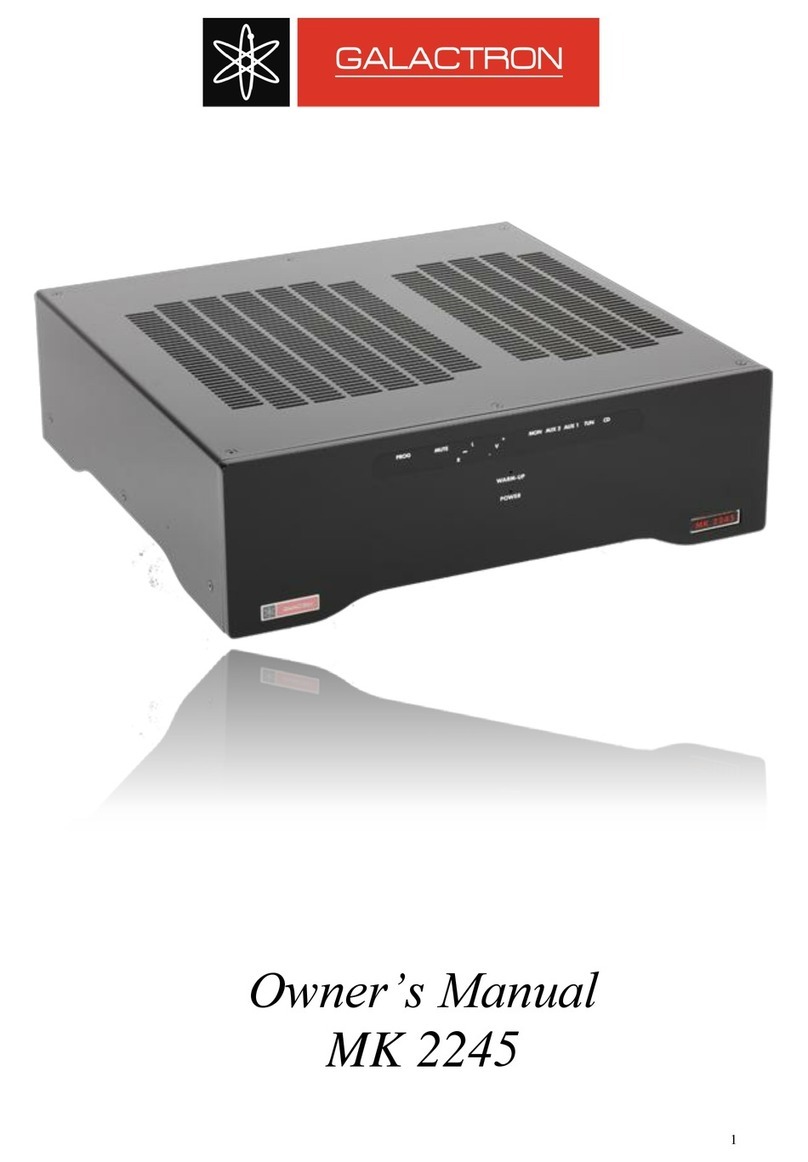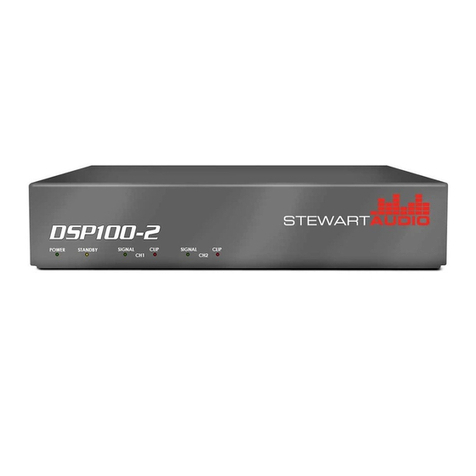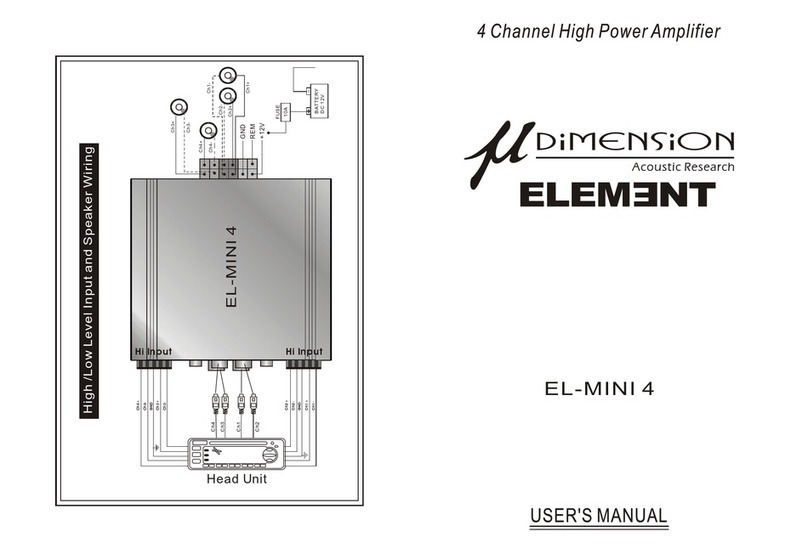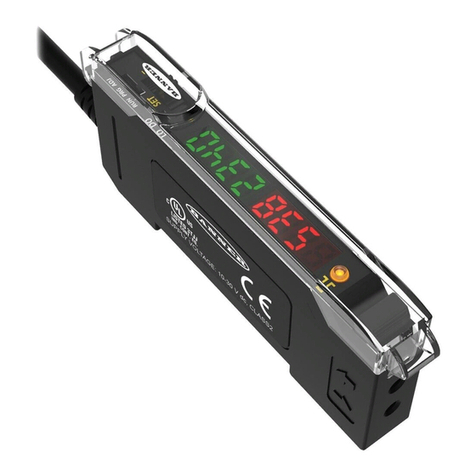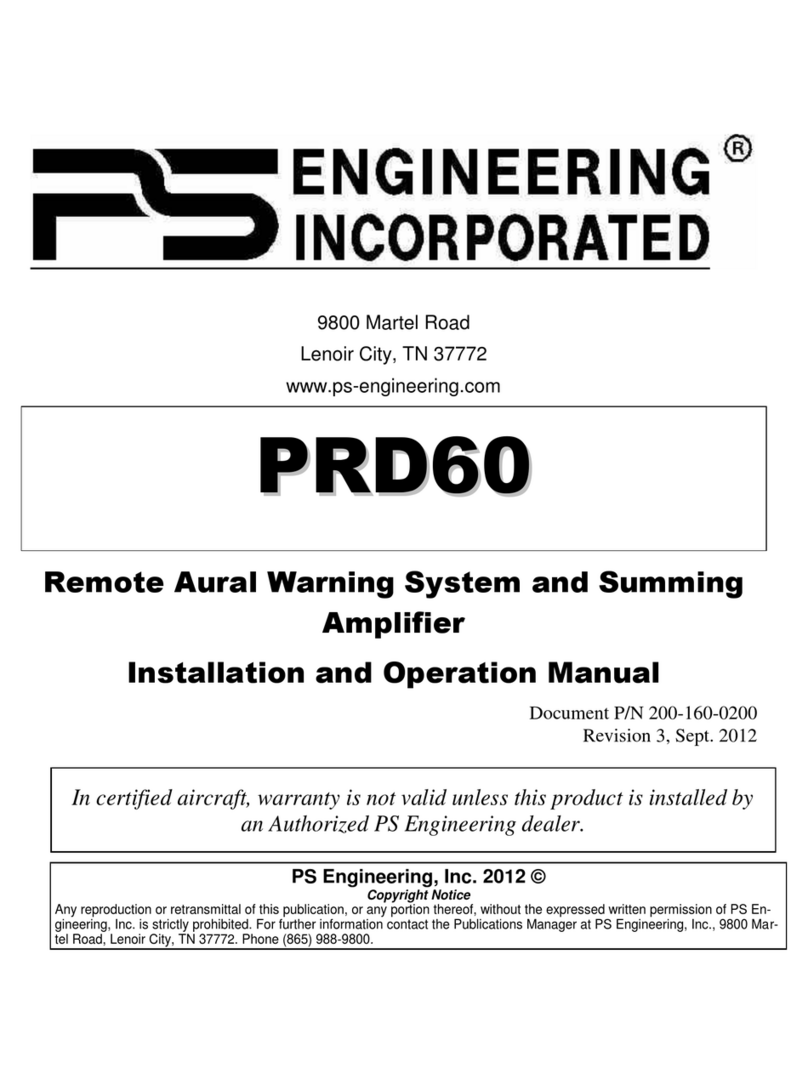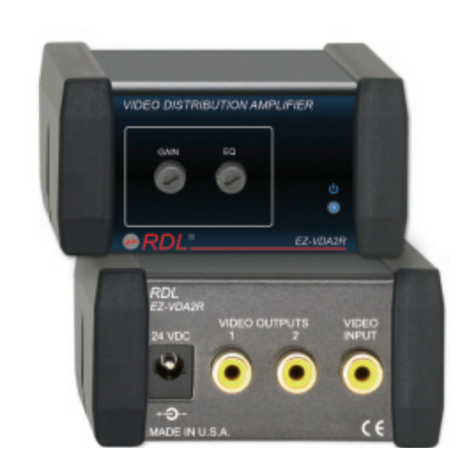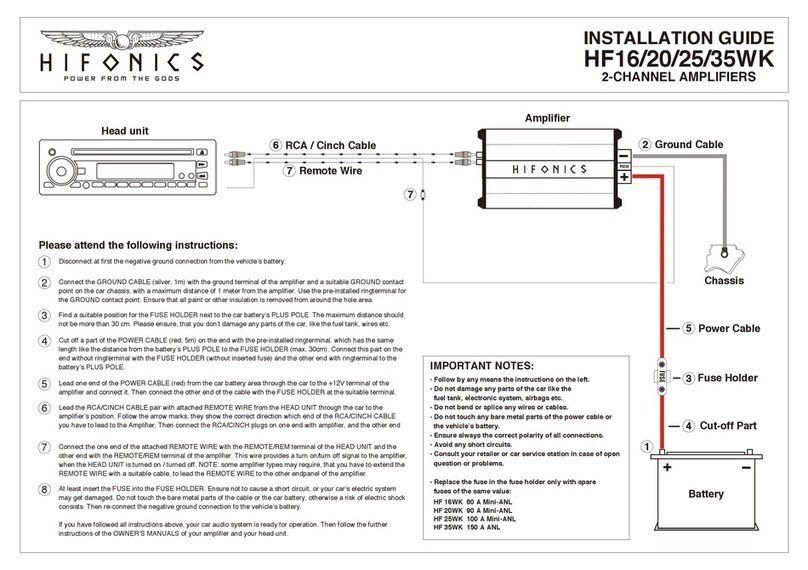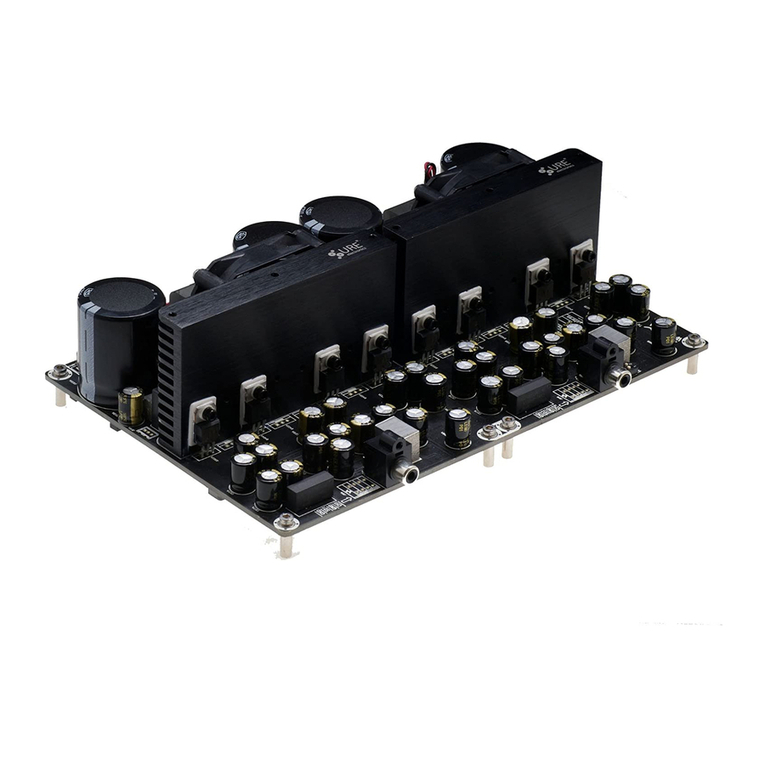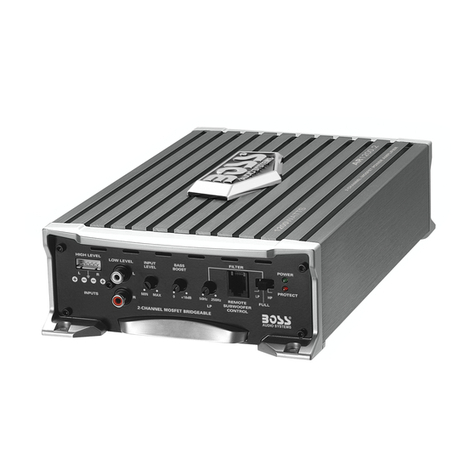
Adjusting the audio level
For the best performance, you must set LEVEL (MIN/MAX) on the side of the amplifier to adjust
the level of the audio signals.
1. Use a screwdriver to turn LEVEL(MIN/MAX) fully to MIN
2. Turn the auto sound system’s volume control to about two-third of its full range.
3. Adjust LEVEL(MIN/MAX) to a comfortable listening level
4. Turn up the auto sound system’s volume control until the sound begins to distort.
Then immediately turn the volume down to a point just before where the distortion
began.
Caution: Never turn up the auto sound system’s volume control more than needed to
adjust the audio level, more than two thirds of its maximum volume.
5. Adjust LEVEL (MIN/MAX) until the sound is at the maximum level you want the
amplifier two produce.
6. Adjust the auto sound system’s volume control to a comfortable listening level.
Trouble shooting
This power amplifier has protection features to prevent any damages from misuse or faulty conditions. If the unit
senses excessive heat, short circuited speakers or overload, the protection indicators will light, and the system will
be turned off. In order to check the occurred problem, you should turn all levels down and all power off and
carefully check the installation for wiring mistakes or short. If the amplifier shuts down due to excessive heat, the
protection indicators will not light: simply allow time for the unit to cool.
Before removing your amplifier, refer to the list below and follow the suggested procedures.
Always test the speakers and their wires first.
Problem Check points
Amplifier is
not powered up
•Check that there is battery power on the +12V terminal.
•Check that remote terminal has at least +12V DC remote
connection.
•Check a good ground connection. Check all fuses.
•Check the protection LED is not lit.
Protection LED
illuminates when
amplifier is powered up
•Check shorts on speaker wires.
•Remove speaker wires and reset the amplifier. If the
protection LED still comes on, then the amplifier is faulty.
Fuse blowing
•Check that the minimum speaker impedance is correct.
•Check short on power cable and vehicle chassis.
Overheating
•Check that the minimum speaker impedance is correct.
•Check speaker shorts.
•Check that there is a good airflow around the amplifier.
Sound too low /
Distorted sound
•Check that the input level control is set to match the output
level of the unit.
•Check the head unit volume.
•Check speaker shorts.
•Check that crossover frequencies have been properly set.
High hiss /
engine noise
in speakers
•Check a good ground and for speaker shorts.
•Disconnect all RCA inputs from the amplifier. If hiss/noise
disappears, check it with a good RCA interconnect. Then
check the component driving the amplifier.
Specifications
Model GZIA
2075HPX
GZIA
2125HPX
GZIA
2230HPX
GZIA
4110HPX
RMS power @ 2 Ω,
1% THD
CEA Standard CEA-2006-A 2 x 75 W 2 x 125 W 2 x 230 W 4 x 110 W
RMS power @ 4 Ω,
1% THD
CEA Standard CEA-2006-A 2 x 60 W 2 x 80 W 2 x 150 W 4 x 70 W
RMS power @ 4ΩBrid
ed
14,4 V, 10% THD 1 x 200 W 1 x 300 W 1 x 540 W 2 x 250 W
Damping factor > 70 > 70 > 70 > 70
Signal to noise ratio 80 dB 80 dB 80 dB 80 dB
X-over crossover 40 – 3000 Hz /
30 – 250 Hz 40 – 3000 Hz /
30 – 250 Hz 40 – 3000 Hz /
30 – 250 Hz 40 – 3000 Hz /
30 – 250 Hz
Bass boost - - -
0 / +6 / +12
dB
Bass boost Frequency - - - 60 Hz
Frequency response 10 Hz - 30 kHz 10 Hz - 30 kHz 10 Hz - 30 kHz 10 Hz - 30 kHz
Input sensitivity 0,2 – 6 V 0,2 – 6 V 0,2 – 6 V 0,2 – 6 V
Channel separation 60 dB 60 dB 60 dB 60 dB
THD < 0.08 < 0.08 < 0.1 < 0.8
Dimensions
W x H x L mm 170 x 255 x 50 200 x 255 x 50 260 x 255 x 50 280 x 255 x 50
Dimensions
W x H x L inch 6.60“ x
10.04“ x 1.97“ 7.87“ x
10.04“ x 1.97“ 10.24“ x
10.04“ x 1.97“ 11.02“ x
10.04“ x 1.97“




















